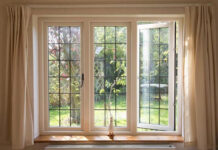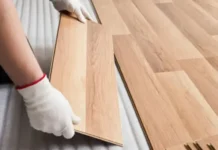If you’re struggling with rising energy bills, you’re not alone. Many homeowners struggle to keep their utility bills down. But have you considered that your windows may be to blame?
According to the U.S. Department of Energy, windows are responsible for up to 30% of residential heating and cooling energy loss. If you’re looking for a way to cut costs, minimizing that energy loss is a huge step in the right direction!
That’s where window films come in. If you’ve ever wondered whether you can (or should) tint your home windows, keep reading for a simple guide on the basics you should know.
Can You Tint Your Home Windows?
Before we go any further, let’s answer the basic question: Can you tint your home windows? The answer is yes, but there’s a little more to it than you’d think.
Residential window tinting isn’t often a difficult project, and DIY enthusiasts may be eager to get this seemingly simple project under their belts. However, the installation process can be more tricky than it first appears.
To tint your home windows, you’ll need to cut window film to the exact requirements of your windowpane, wiping the film down with care and applying it using a water solution and a plastic squeegee.
This sounds easy enough, but without careful attention to detail, you may end up with bubbles, dirt, wrinkles, streaks, or scratches. When this happens, you may even have to remove and replace the film entirely, which can be a costly waste. Furthermore, not all films work well with all windows, and the wrong tint installation could even damage your windows.
At the end of the day, the answer is yes, you can tint your home windows—but for most inexperienced DIY-ers, opting for a professional installation will be the safer bet.
Of course, if you’re still on the fence about your window tinting options there are a few important things that may sway your decision!
- Not All Window Films Were Created Equal
You may have started hunting for the right window film based on price, but it’s important to note that different types of window films have different advantages. Here are some of the benefits of house window tinting.
Energy Efficiency
The right films can help reflect or absorb the sun’s UV rays, which not only reduces glare but also indoor temperature. This, in turn, keeps your home more comfortable and your wallet a little fatter! Energy-efficient window film can also ensure that your interior furniture and flooring don’t fade over time, which saves you additional money on replacements in the long term.
Security
If you’re looking for reasons to tint your home windows, security should be at the top of the list. From storm damage to protection against home intrusion, thick security films can help prevent windows from shattering, holding the glass together to protect your home.
Decor
Want to enhance the appearance of your home’s windows overall? Choosing a decorative window film can help you add bold opaque or translucent colors to your home, helping you better match your home’s internal decor.
Privacy
Need to keep certain spaces—like bathrooms and showers—private? Privacy films allow you to let in natural light while adding the appearance of frosted glass, maintaining your privacy.
- Window Films May Void Your Warranty
As mentioned above, not all window films work with all windows, and for good reason. Certain windows can’t tolerate the thermals train of window films, especially solar films. As a result, some window warranties specifically state that they won’t cover damages or defects to the glass if tinted films are in place.
Check your manufacturer’s literature before moving forward with the installation process to make an informed decision.
- Older Windows See the Most Benefits
Modern windows come with an energy-efficient coating called a low-emission or low-e coating. This specialized coating is designed to help the glass block out more heat than it could otherwise.
Older windows, however, won’t always have this coating—meaning they have the most to gain from the energy-efficient benefits of the right window tint.
- Window Tinting Works for Both Owned and Rented Properties
Most window films come in different varieties in terms of permanence. Certain films, for example, tend to be temporary and easy to remove or reposition, while others aren’t designed to come off. This means you may still be in luck even if you’re renting a property at the moment.
Temporary film solutions tend to be the thinner varieties, like decorative or privacy films. Security and solar film, on the other hand, are often on the permanent or semi-permanent end of the spectrum.
- Window Tinting Is Less Expensive Than You’d Think
Compared to the cost of replacing windows with energy-efficient options, it’s no surprise that window tinting is the winner in terms of expense.
However, depending on the type and brand of window film, you may spend between $2-10 per square foot on aftermarket window film. Installing the film yourself can be cheap, as you should have all the materials you need on hand.
If you’d like to go the expert route, it may cost more, of course. The cost of professional installation will vary widely depending on the number, types, and sizes of the windows in question, so you may want to consult with a contractor in your area. For most homes, the cost will be from a few hundred to a thousand dollars.
Enhance Your Home Windows With Window Tinting
Whether you’re hoping for more energy efficiency or additions to your home decor, finding the right window tint can make all the difference. If you’d like to tint your home windows, consider your own personal skill level and attention to detail as you weigh a DIY job against the benefits of a professional installation. Whatever you decide, a careful installation can help you make the most of your new tints!
Looking for more tips to help you make the most of your home? Check out our other posts for more insights.



































































